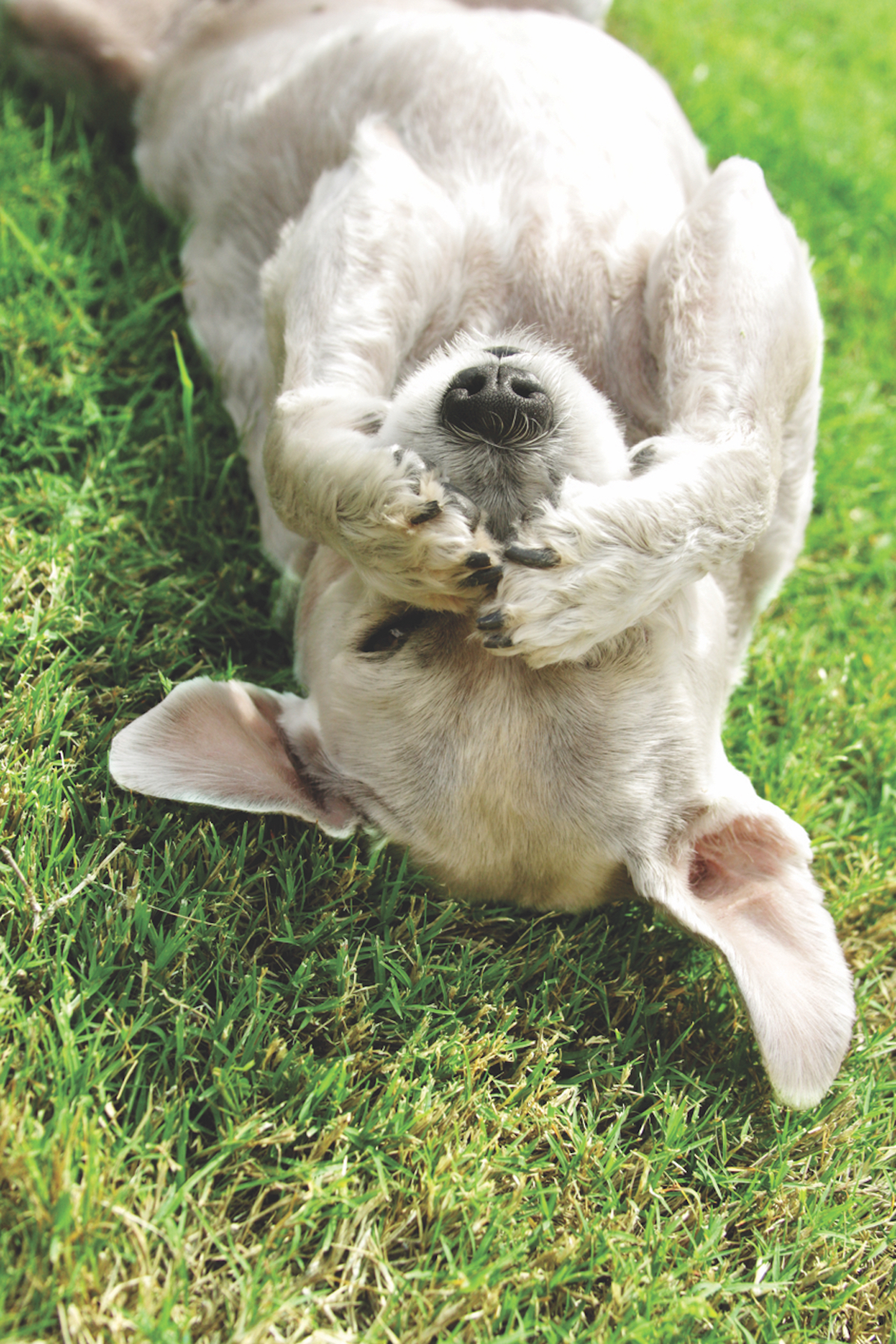By Dr. Parker T. Barker

It’s that time of year again when owners, who are mostly reasonable for 11 months and 30 days of the year, suddenly turn into Wacko Woman at Halloween. Every October 31st, out come the costumes that seem to get bigger, shinier, and more ridiculous every year. Mom’s rationale is that with everybody dressed up looking like a hot dog or a Star Wars character, her two dogs would love to be included in the festivities. Did she ask us? No. Would we have said, “Sure go ahead and make me look like a frog.” I don’t think so. But some pets do enjoy it. I have met cats that looked more like a pirate than Johnny Depp does. But there are some pros and cons to making your pet a mobile decoration for Halloween.
First, if your dog has a very independent and dominate personality, they may not enjoy costumes. If your dog has a bulky costume on their body, they may feel that their place in the pecking order is being threatened. This can result in your dog becoming scared and freezing up, or in acting out to regain normalcy in their lives. Cats can sometimes react by simply shredding the costume and perhaps your hand at the same time. Costumes are restrictive by nature and that really doesn’t sit well with a lot of pets.
But if we haven’t convinced you this is a really bad idea for a lot of pets, try and accustom your dog or cat to their costume ahead of time. And remember, NO CHOCOLATE! You have got to keep an eye on the candy if someone like me is around. Mom calls me a 4-legged vacuum whatever that is. So here are my thoughts on how to do this with minimal stress to your pet:
- Purchase your pet’s costume early so you can help him become used to wearing it over a period of two to four weeks.
- Bring your dog along with you when you purchase the costume (if possible). Stores may not allow you to try the costume on your dog, but you can at least estimate the size by holding it up to his body.
- When fitting a costume, check the seams around the neck, feet, and tail. If it feels tight, it’s most likely uncomfortable and potentially hazardous to their health.
- After purchasing the costume, take it home and begin getting your pet used to it at least several days before Halloween. Sometimes treats will be enough incentive to keep your pet in the costume at least for a short time.
If your pet attempts to remove the costume, or if he seems unhappy or uncomfortable even after you have followed all this advice, don’t force him to wear it. Remove the costume and either attempt a simpler idea (such as having him wear a festive Halloween bandana) or allow him to skip a costume altogether. You have to recognize that while simple training and lots of treats may suffice for many pets, others simply will not put up with wearing a costume. I would be one of those.
And don’t forget, for safety’s sake, it is also a good idea to attach reflective patches to your pets costume so he is easy to see on Halloween night. Trick-or-treating with your canine can be fun (as long as he is friendly, non-aggressive to animals or people, and not afraid of costumed kids), but safety is a crucial factor. If he is uncomfortable going out with the hoards on Halloween night, keep him inside and have him help you greet trick-or-treaters. Most kids are thrilled when they meet a Zombie with four feet.
So have a happy Halloween everybody. Please, please just let me know when it is November.






